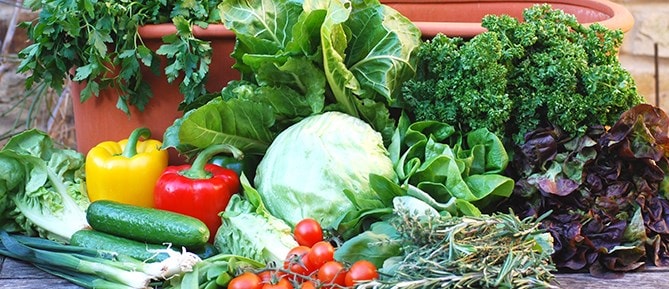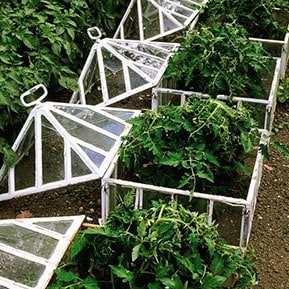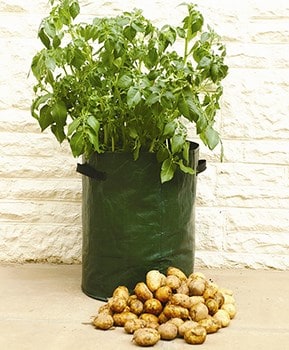Extending The vegetable Harvest

Like most veg gardens up and down the country, my plot is looking its best right now and it feels fantastic to know there’s all that tasty, home-grown veg waiting to be harvested. A veritable production-line of peas, carrots and salad veg as well as crops of beans, cabbage, calabrese and early potatoes waiting in the wings. But, as any experienced veg gardener knows, the trick is to keep the production line going right through the summer and into the autumn, so that there is a continuity of supply for the kitchen table. By continuing to make regular sowings and organising help while you are away on holiday should go a long way to keeping your garden productive. But you also need to make preparations for when the weather turns colder at the end of the summer and maybe try a few late crops to extend the vegetable harvests through the winter, too.
 Continuous crops Time your successional sowing of early carrots, beetroot, lettuce, radish, spring onions turnips to fall either side of any planned holiday to prevent harvesting gaps later in the season. If you choose quick-maturing varieties, all these vegetables can be sown in short rows at regular intervals throughout July and well into August. If you have a coldframe or cloche standing idle, use them to protect your final sowings to keep them growing for longer and protect them from the onset of colder weather. Bear in mind that the later the sowing the more of a gamble it is - especially if you live further north. But in my experience, late sowings are worthwhile in most years.
Continuous crops Time your successional sowing of early carrots, beetroot, lettuce, radish, spring onions turnips to fall either side of any planned holiday to prevent harvesting gaps later in the season. If you choose quick-maturing varieties, all these vegetables can be sown in short rows at regular intervals throughout July and well into August. If you have a coldframe or cloche standing idle, use them to protect your final sowings to keep them growing for longer and protect them from the onset of colder weather. Bear in mind that the later the sowing the more of a gamble it is - especially if you live further north. But in my experience, late sowings are worthwhile in most years.
Soil conditions by midsummer can be dry, so it important to water the seedbed thoroughly the day before you sow, or you can moisten the seed drill on the day by trickling in water just before sowing. After sowing, cover the seed with dry soil which is easier to draw across evenly and it will prevent the soil over the seed from ‘capping’ - forming a crusty layer as it dries out and which the emerging seedlings find difficult to penetrate.
Seed sown direct outside this month will germinate quickly and grow away strongly because the soil is warm and can be kept moist. However, crop growth and development will slow as soil and air temperatures fall away at the end of the season, so cloches are an ideal way keeping temperatures up, allowing late-sown crops to reach maturity. If you have a greenhouse, sowing late crops is much less of a gamble. Winter lettuces are probably the easiest crop, but a row of French beans sown now in a frost-free greenhouse will also produce a reliable harvest.
Starting off in pots It is still worth sowing a few seeds in pots to raise quick-growing vegetables to fill gaps where early crops are harvested, like new potatoes and peas. Bear in mind that lettuce seed in particular will not germinate if soil temperatures rise above 25oC, so keep them somewhere cooler than this until seedlings emerge. In a large container or old dustbin, it’s quite possible to grow a late crop of new potatoes. Planted this month, you could be harvesting hens-egg sized new potatoes in time for Christmas!
 Holiday hangover Holidays come at just the wrong moment for the vegetable garden, which is why I try and take my annual break as late as possible in the summer. It’s such a wrench to leave the plot you’ve lovingly tended through the busy spring just as the much-anticipated crops are queuing-up to be harvested. If you are going away for a few days the plot will cope unaided, but if it’s a week or more you will have to plan ahead and make preparations.
Holiday hangover Holidays come at just the wrong moment for the vegetable garden, which is why I try and take my annual break as late as possible in the summer. It’s such a wrench to leave the plot you’ve lovingly tended through the busy spring just as the much-anticipated crops are queuing-up to be harvested. If you are going away for a few days the plot will cope unaided, but if it’s a week or more you will have to plan ahead and make preparations.
Later sowings I like trying a new type of vegetable each year. Late sowings are ideal for this since there are several more unusual crops that can be sown during late summer. For a winter harvest you could try sowing chicory, endive and corn salad as well as winter radish and winter spinach. It’s also worth including crops, such as hardy winter lettuce, to help fill the hunger gap before the first of the early crops next spring.
